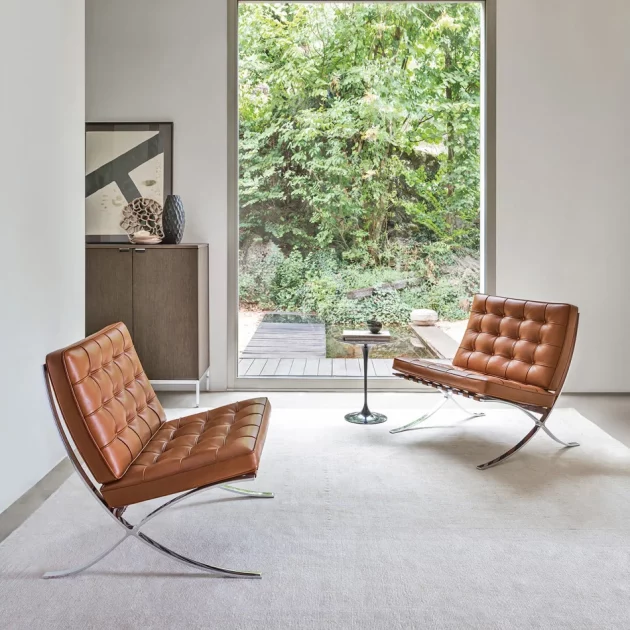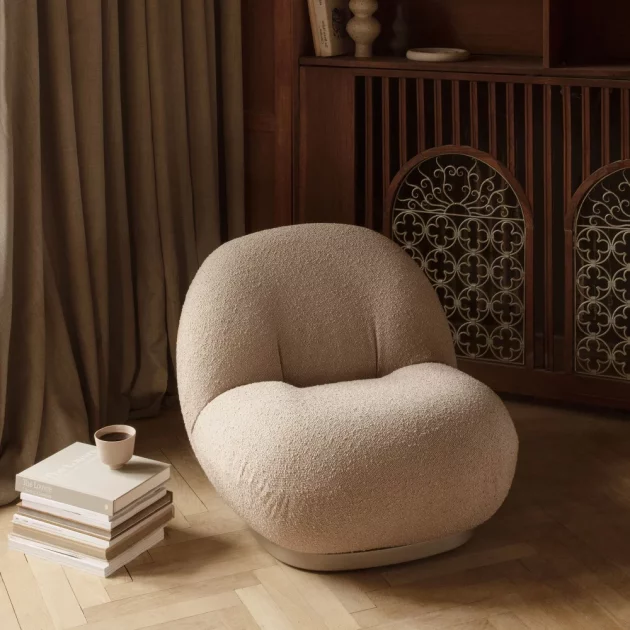What is an iconic chair? Recognizable among all, they have gone through the decades without taking a wrinkle. The cult armchairs of design result from the talents and avant-garde of renowned designers and architects. Between technical prowess and audacity of shapes and colours, discover the iconic armchairs as well as the story of their origins.
The “Barcelona” armchair, Ludwig Mies van der Rohe
Designed for the Spanish royal couple on the occasion of the opening ceremony of the German pavilion during the Universal Exhibition in Barcelona in 1929, the “Barcelona” armchair combines graceful curves and monumental lines. Inspired by the classic shape of scissor chair bases, Ludwig Mies van der Rohe designed the “Barcelona Chair” as a throne for modern times. And for good reason, the main particularity of this cult armchair lies in the harmonious association of the seat and the backrest with subtly curved X-shaped legs, which give it a disconcerting lightness. Considered an icon of 20th-century design, this armchair remains an object of desire, nearly 90 years after its creation.
The “Pacha” armchair, Pierre Paulin
This is a design classic that lives up to its name. With its vaporous allure and inviting laziness, the “Pacha ” armchair synthesises all the obsessions of its creator Pierre Paulin. In 1975, the French designer imagined this seat devoid of angles and legs whose silhouette seems to be borrowed from the sculpture. Symbol of a new era, the charismatic Pasha will be elevated to the rank of “modern before its time”. Reissued in 2018 by the Danish Gubi then boosted by the seventies movement with which contemporary interiors have fallen in love, it is a great success, especially in its curly wool version. On the strength of this return to the forefront of the design scene, the entire Pacha tribe (Pacha Lounge Chair, Pacha Ottoman, Pacha Sofa) has even taken up its summer quarters.
The “Diamond” armchair, Harry Bertoia
He has gone through six decades without taking a wrinkle. In 1952, Italian Harry Bertoia worked with Knoll and experimented with bending metal rods into functional sculptures. The result is a collection of seats that have become design icons today. With its shape similar to a diamond and its legs in rods, the “Diamond” armchair would be one of the lightest armchairs in the history of furniture, but also one of the best-selling. After this immediate success, Harry Bertoia decided to devote himself exclusively to his first passion: sculpture. HAS Through these seats with geometric shapes and daring techniques, the Italian designer has turned modernism upside down.
Tags: armchair, cult armchairs, decorations, home decor, interior design, living room, living room decor











